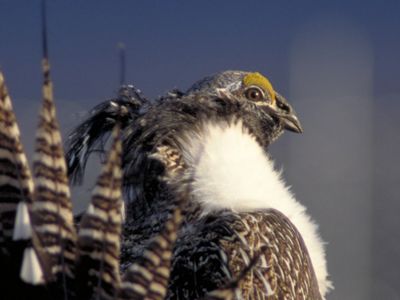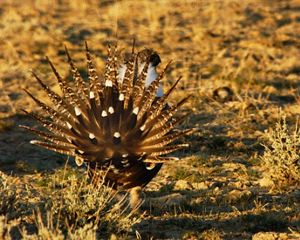Meet the Sage Grouse
The greater sage grouse is the largest grouse in the Americas, at home in the West’s clean-scented high deserts and plains. Each spring males gather on these lands known as leks, to impress females with their display. After mates are chosen, hens usually lay 6-10 eggs and chicks hatch in about four weeks.
Sage grouse inhabit large, intact and mostly treeless landscapes with sagebrush, native bunchgrasses, wildflowers and wet meadows. The grouse not only depends on sagebrush for its mating ground but also for food.
The sage grouse are large birds and prefer to walk, but are still able to fly as far as six miles at a time at 50 miles per hour. They migrate seasonally, typically from Canada to Montana or other states in the northwest.

Protecting the Sage Grouse
At one time the bird picked its way through sagebrush in 13 states and three Canadian provinces and numbered as many as 16 million. Today approximately 200,000 birds remain.
Most of the decline is due to habitat loss. Ecologists today estimate that only 10 percent of remaining sagebrush habitat is pristine. This is due to development, overgrazing, energy development, too-frequent fire and invasive weeds.
The Nature Conservancy has been working for decades with private and public partners to conserve this unique American bird and its habitat, for future generations of Americans and our wildlife.
TNC efforts focus on the following:
Providing science and research to identify the best places to conserve sage-grouse habitat.
Teaming with ranchers to improve range health.
Purchasing land and voluntary conservation agreements to set aside critical habitat.
Collaborating with energy and mining companies to avoid, minimize and mitigate the impact of development activities.
Learn about specific sage grouse conservation projects in seven states.



